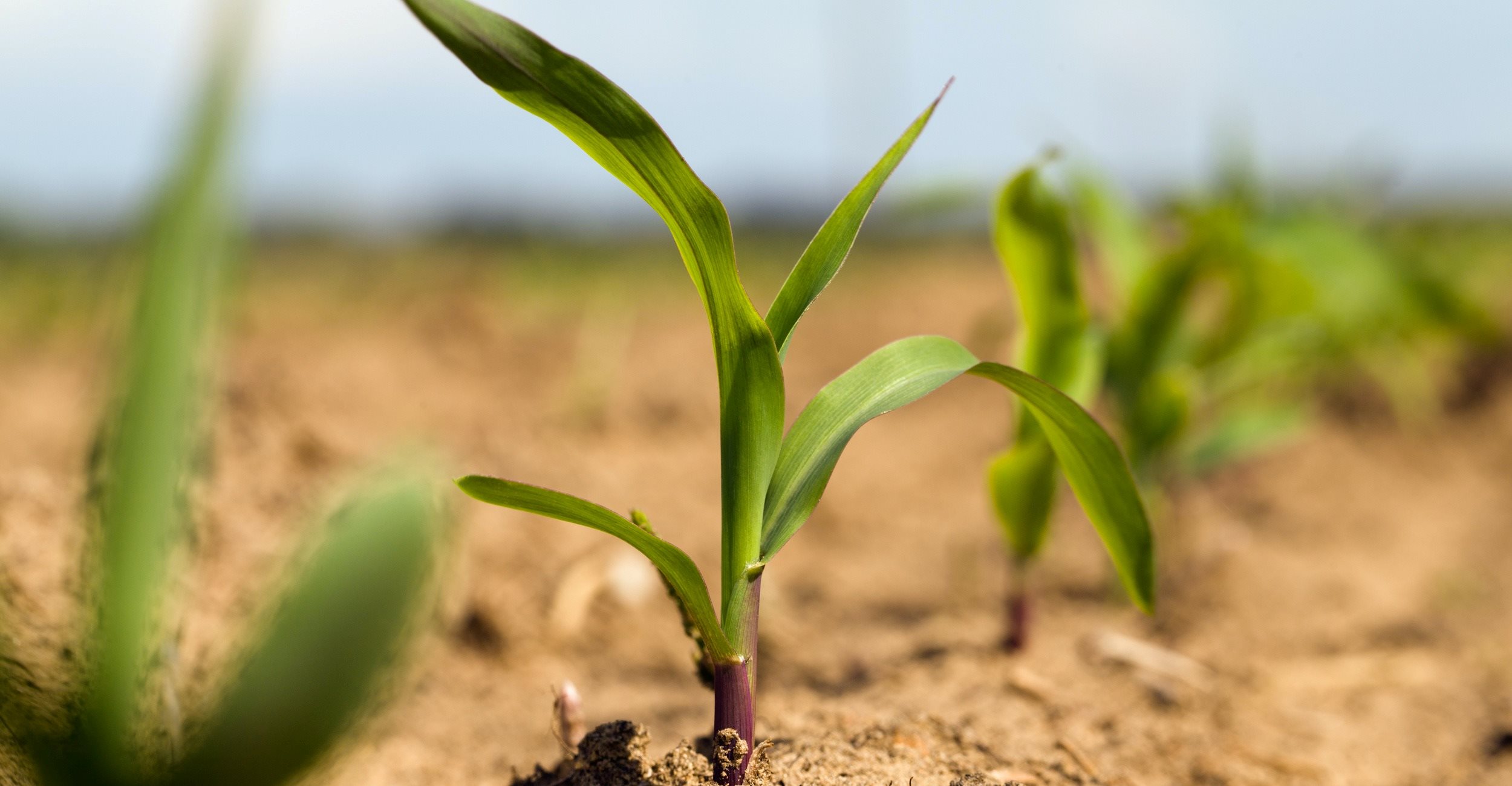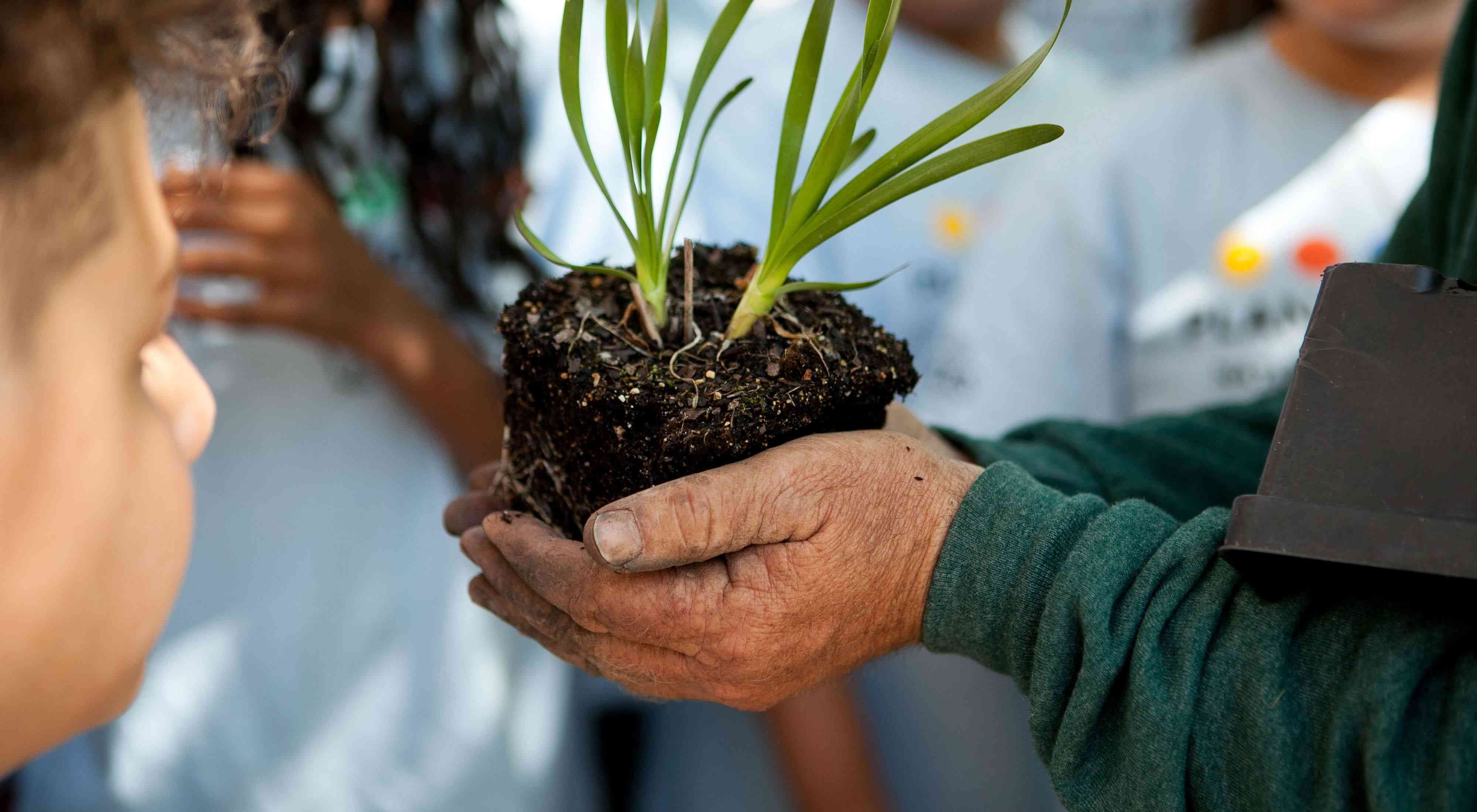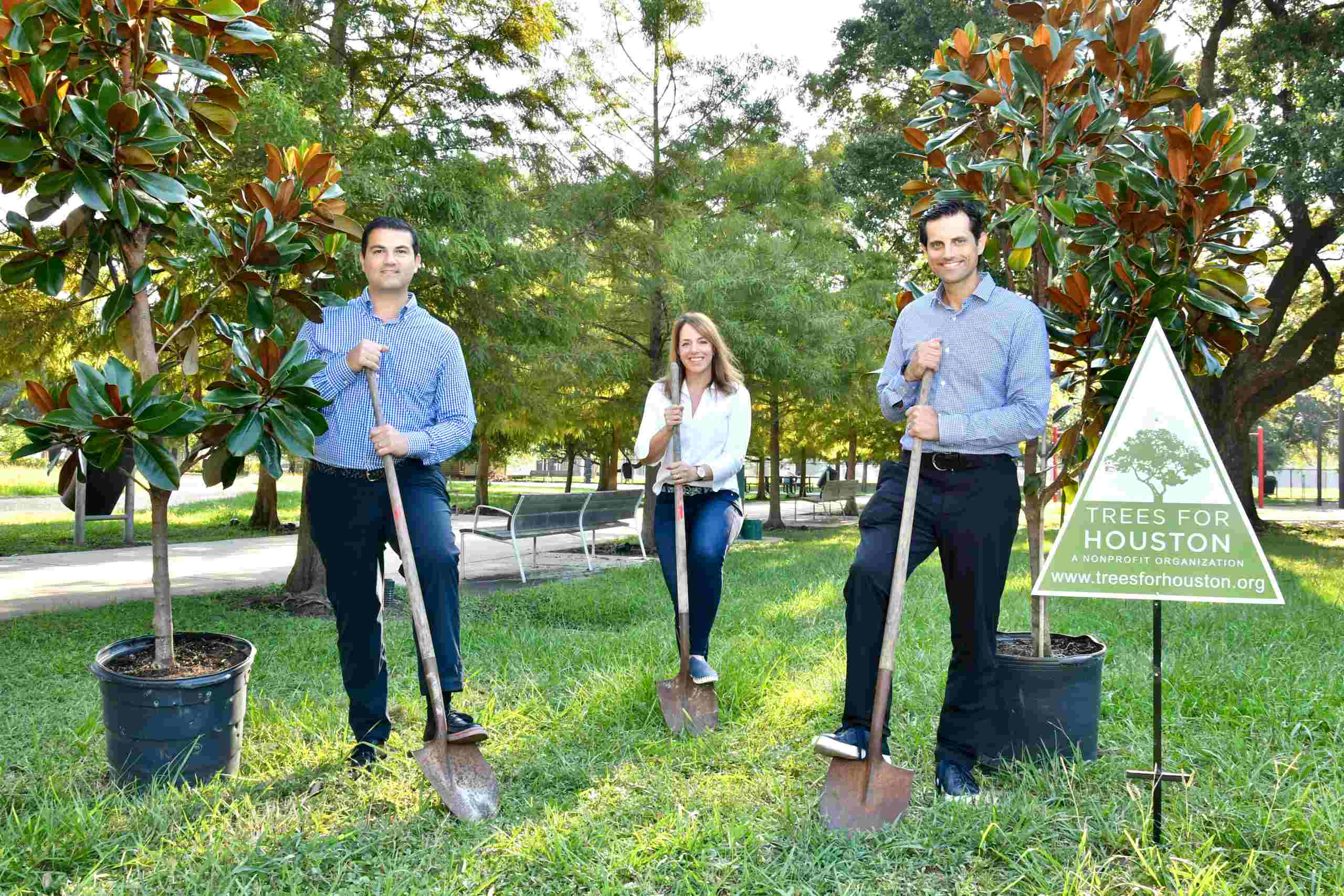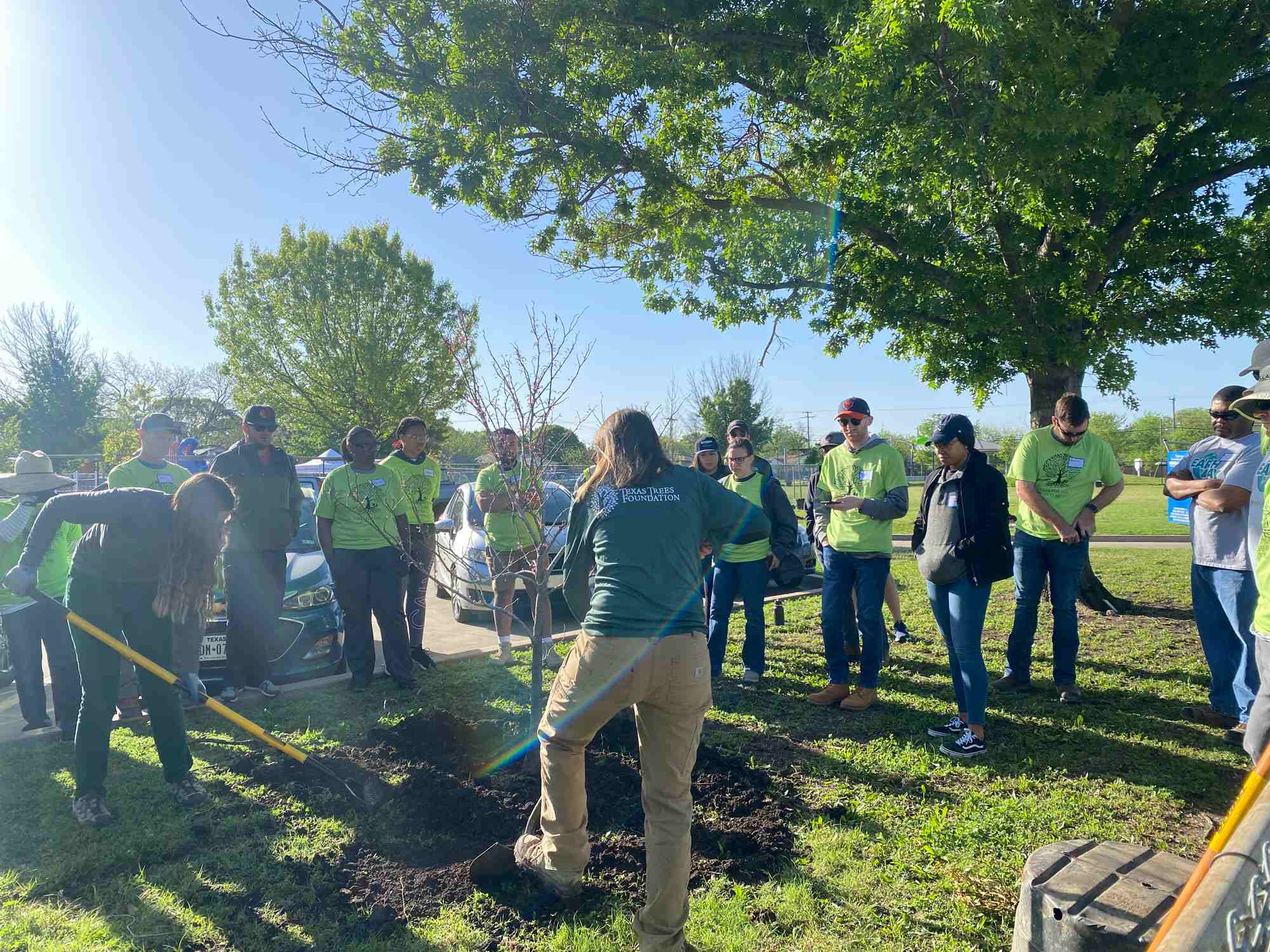Home>Gardening Basics>Understanding Soil>What Zone Is Oklahoma In For Planting


Understanding Soil
What Zone Is Oklahoma In For Planting
Modified: January 22, 2024
Find out what zone Oklahoma is in for planting and learn more about understanding soil to ensure successful gardening.
(Many of the links in this article redirect to a specific reviewed product. Your purchase of these products through affiliate links helps to generate commission for Chicagolandgardening.com, at no extra cost. Learn more)
Table of Contents
Introduction
When it comes to gardening and landscaping, understanding your plant hardiness zone is crucial for success. Plant hardiness zones provide valuable information about the suitability of different plants for specific geographical regions. By knowing the zone you are in, you can select plants that will thrive in your area’s unique climate and soil conditions.
In the United States, the Department of Agriculture (USDA) has established a Plant Hardiness Zone Map, dividing the country into different zones based on average annual minimum temperatures. Each zone is defined by a specific temperature range, which helps determine the types of plants that can survive and thrive in that zone.
Oklahoma, known as the “Sooner State,” is located in the southern plains region of the United States. It has a diverse climate, with a mix of humid subtropical, semi-arid, and even some parts of the state categorized as arid. Understanding the plant hardiness zones in Oklahoma is essential for gardeners and landscapers to make informed decisions about which plants to choose.
There are multiple factors influencing the plant hardiness zones in Oklahoma. These include latitude, elevation, prevailing winds, and proximity to bodies of water. The state is divided into four main zones, each with its own unique characteristics and suitability for different types of plants.
Whether you are planning a vegetable garden, a flower bed, or a full-scale landscape project, knowing your plant hardiness zone in Oklahoma will guide you in selecting the right plants that can withstand the local climate and soil conditions. In the following sections, we will discuss the specific zones in Oklahoma and provide recommendations for plant selections based on these zones.
Plant Hardiness Zones Explained
Plant hardiness zones are a system developed to help gardeners and horticulturists understand the climatic conditions of a particular region and determine which plants are most likely to thrive in that area. These zones are based on the average annual minimum temperature, which is a critical factor in determining a plant’s ability to survive the winter.
The United States Department of Agriculture (USDA) created the Plant Hardiness Zone Map, which divides the country into 13 zones. Each zone is defined by a specific temperature range, represented by a number and a letter. The zones range from 1a (coldest) to 13b (warmest).
The zones are determined by historical climate data, including average annual minimum temperature, extreme minimum temperature, and duration of cold spells. The data is collected from weather stations and then analyzed to create the zone boundaries.
When selecting plants for your garden or landscape, it is important to consider the plant hardiness zones in your area. By choosing plants that are well-suited to your zone, you increase their chances of survival and overall health.
However, it is important to note that plant hardiness zones are not the sole factor determining a plant’s ability to thrive. Other factors such as soil type, sun exposure, rainfall, and humidity also play a role. Therefore, it is valuable to consider these factors in addition to the hardiness zone when selecting plants.
The USDA Plant Hardiness Zone Map is a valuable tool for gardeners and landscapers across the United States. By understanding the zone you are in, you can make informed decisions about plant selection and create a garden that is well-suited to your climate and growing conditions.
In the next section, we will delve into the specific plant hardiness zones in Oklahoma and explore how they impact gardening and landscaping in the state.
Plant Hardiness Zones in the United States
The United States is a vast country with diverse climates and growing conditions. To help gardeners and horticulturists navigate these variations, the United States Department of Agriculture (USDA) has developed the Plant Hardiness Zone Map. This map divides the country into 13 zones, each identified by a specific temperature range to indicate the suitability of plants for that area.
Zone 1, the coldest zone, is found in northern Alaska, while Zone 13, the warmest zone, can be found in parts of southern Florida and Hawaii. The zones are determined by the average annual minimum temperature, with a 10-degree Fahrenheit difference between each zone.
The USDA Plant Hardiness Zone Map serves as a valuable resource for gardeners, landscapers, and agricultural professionals across the country. By understanding the zone you are in, you can choose plants that are well-adapted to your region’s climate and growing conditions.
It’s important to note that the Plant Hardiness Zone Map is not the only consideration when selecting plants. Other factors like soil type, rainfall, sun exposure, and humidity also play important roles in a plant’s success. However, the zone provides a helpful starting point for choosing plants that are likely to thrive in your area.
For example, if you live in Zone 5, where the minimum average temperature ranges from -20 to -10 degrees Fahrenheit, you’ll want to select plants that can tolerate colder temperatures and have a higher cold hardiness. On the other hand, if you reside in Zone 10, where the minimum average temperature ranges from 30 to 40 degrees Fahrenheit, you’ll be looking for plants that can handle the heat and humidity typical of that region.
While the Plant Hardiness Zone Map is a useful tool, it’s important to remember that it’s based on historical data and doesn’t account for microclimates or extreme weather events. Local factors, such as urban heat islands or coastal influences, can have an impact on the actual growing conditions in your specific area.
Overall, the Plant Hardiness Zone Map provides a general guideline to help gardeners make informed choices about which plants are best suited for their particular region. In the next section, we’ll explore how these zones are classified in Oklahoma and the specific factors that influence them.
Zone Classification in Oklahoma
Oklahoma, with its diverse climate and geographical features, is divided into four main plant hardiness zones: Zone 6, Zone 7, Zone 8, and Zone 9. Each zone represents a different range of average annual minimum temperatures, allowing gardeners to select plants that are well-suited to their specific zone.
Zone 6 covers the northern part of Oklahoma, including cities like Tulsa and Bartlesville. This zone experiences cold winters, with average minimum temperatures ranging from -10 to 0 degrees Fahrenheit (-23 to -18 degrees Celsius). Gardeners in Zone 6 need to select plants that can tolerate and survive freezing temperatures for extended periods.
Zone 7 is located in the central part of the state, including cities like Oklahoma City and Norman. This zone has average minimum temperatures ranging from 0 to 10 degrees Fahrenheit (-18 to -12 degrees Celsius). Gardeners in Zone 7 can grow a wide range of plants, but they still need to consider occasional cold snaps and the potential for frost damage.
Zone 8 covers the southern part of Oklahoma, including cities like Lawton and Ardmore. This zone has milder winters, with average minimum temperatures ranging from 10 to 20 degrees Fahrenheit (-12 to -7 degrees Celsius). Gardeners in Zone 8 have a longer growing season and can cultivate a wider variety of plants compared to the northern zones.
Zone 9 represents the warmest areas of Oklahoma, including cities like Durant and Hugo. This zone experiences mild winters, with average minimum temperatures ranging from 20 to 30 degrees Fahrenheit (-7 to -1 degrees Celsius). Gardeners in Zone 9 enjoy a longer growing season and have the ability to grow a wide range of heat-loving plants.
It’s important to note that these zone classifications provide a starting point for plant selection, but they don’t account for other factors like soil type, sun exposure, rainfall, and humidity. Additionally, microclimates within Oklahoma may create variations in growing conditions, especially in urban areas or areas with unique geographical features.
By understanding the specific zone classification for your area in Oklahoma, you can choose plants that are better adapted to the prevailing climate and temperature conditions. This will ultimately increase your chances of successfully growing a thriving and beautiful garden.
Next, we will explore the various factors that influence plant hardiness zones in Oklahoma.
Factors Influencing Plant Hardiness Zones in Oklahoma
Several factors contribute to the plant hardiness zones in Oklahoma and influence the types of plants that can thrive in different regions of the state. Understanding these factors is key to selecting plants that will have the best chance of success in your garden or landscape.
1. Latitude: The northern part of Oklahoma is located at a higher latitude, which generally results in colder temperatures compared to the southern regions. This difference in latitude contributes to the variation in plant hardiness zones throughout the state.
2. Elevation: Oklahoma’s elevation varies significantly across the state, with higher elevations in the western part of the state and lower elevations in the eastern region. Higher elevations typically experience cooler temperatures, while lower elevations tend to be warmer. This elevation difference influences the plant hardiness zones and the types of plants that can thrive in each zone.
3. Prevailing Winds: The prevailing winds in Oklahoma can have an impact on the local climate. Areas that experience strong winds, particularly cold northerly winds in winter, may have lower temperatures and a higher risk of frost damage. Such factors can influence the plant hardiness zones in those areas.
4. Proximity to Bodies of Water: Oklahoma has a few significant bodies of water, such as lakes and rivers. Areas near these bodies of water benefit from the moderating effect they have on temperatures. They can help mitigate extreme temperature fluctuations, particularly in winter, resulting in slightly milder conditions and potentially adjusting the plant hardiness zones in those areas.
5. Soil Type: Soil composition and quality play a crucial role in determining a plant’s success. Oklahoma has a variety of soil types, including clay, loam, and sandy soils. Different plants have different soil preferences, and being aware of your specific soil type in conjunction with your plant hardiness zone can help you select plants that will thrive in your particular soil conditions.
6. Microclimates: Microclimates are small-scale variations in temperature and other climatic factors within a larger area. Factors such as urban heat islands, tree cover, and topography can create microclimates that deviate slightly from the general plant hardiness zone boundaries. It’s essential to be aware of any microclimate effects in your specific location and adjust plant selection accordingly.
Considering these factors will help you make informed decisions when choosing plants for your garden or landscape. By selecting plants that are well-suited to your zone and taking local influences into account, you can create a thriving and beautiful outdoor space.
In the next section, we will provide recommendations for plants that are suitable for the different plant hardiness zones in Oklahoma.
Recommended Plants for Oklahoma Zones
Choosing the right plants for your specific plant hardiness zone in Oklahoma is crucial for a successful garden or landscape. By selecting plants that are well-suited to your zone, you increase the likelihood of their survival and overall health. Here are some recommended plant options for each of the four main zones in Oklahoma:
Zone 6: This zone is characterized by colder winters with average minimum temperatures ranging from -10 to 0 degrees Fahrenheit (-23 to -18 degrees Celsius). Recommended plants for Zone 6 include cold-hardy trees like redbud, eastern red cedar, and black walnut. Other suitable options include native grasses such as little bluestem and switchgrass, as well as hardy perennials like purple coneflower and daylilies.
Zone 7: Zone 7 experiences slightly milder winters, with average minimum temperatures ranging from 0 to 10 degrees Fahrenheit (-18 to -12 degrees Celsius). Some recommended plants for this zone are crape myrtle, crepe hibiscus, and knock-out roses for their vibrant summer blooms. This zone is also suitable for herbs like rosemary and thyme, as well as drought-tolerant perennials like Russian sage and black-eyed Susans.
Zone 8: With average minimum temperatures ranging from 10 to 20 degrees Fahrenheit (-12 to -7 degrees Celsius), Zone 8 allows for a longer growing season and a wider range of plant options. Consider planting southern magnolia, cypress, or bald cypress trees for their graceful beauty. For colorful blooms, try planting lantana, verbena, and salvias. Other plant options include southern favorites like okra, tomatoes, and peppers for vegetable gardens.
Zone 9: Zone 9 represents the warmest areas of Oklahoma with mild winters and average minimum temperatures ranging from 20 to 30 degrees Fahrenheit (-7 to -1 degrees Celsius). In this zone, you can enjoy an extended growing season and a wide variety of heat-loving plants. Consider planting citrus trees like lemon, lime, or satsuma orange. Vibrant flowering options include bougainvillea, hibiscus, and oleander. For edible plants, you can grow heat-tolerant vegetables like eggplant, hot peppers, and sweet potatoes.
These plant suggestions are just a starting point, and there are many more options available for each zone in Oklahoma. It’s important to consider other factors like soil type, sun exposure, and water needs when selecting plants for your specific landscape or garden project.
Be sure to research the specific requirements of each plant and ensure they are suitable for your zone before planting. Local nurseries and gardening resources can provide valuable insight into the best plant choices for your specific area within Oklahoma.
By selecting the right plants for your zone, you can create a beautiful and thriving garden or landscape that brings joy and enhances the natural beauty of your surroundings.
Conclusion
Understanding plant hardiness zones is essential for successful gardening and landscaping in Oklahoma. By knowing your specific zone, you can select plants that are well-adapted to the local climate and growing conditions, ensuring their survival and overall health.
The United States Department of Agriculture (USDA) Plant Hardiness Zone Map provides a valuable resource for determining the suitable plant options for different regions. In Oklahoma, the state is divided into four main zones: Zone 6, Zone 7, Zone 8, and Zone 9. Each zone has its own unique characteristics and temperature ranges that influence plant selection.
Factors such as latitude, elevation, prevailing winds, proximity to bodies of water, soil type, and microclimates all contribute to the variation in plant hardiness zones throughout the state. Understanding these influences helps gardeners make informed decisions when choosing plants for their specific zone.
By adhering to the recommended plant options for each zone, you can create a thriving and visually appealing garden or landscape. From cold-hardy trees and native grasses in Zone 6 to heat-loving citrus trees and colorful blooms in Zone 9, there is a wide range of plant choices available for Oklahoma gardeners.
However, it’s important to remember that plant hardiness zones are just one factor to consider when selecting plants. Other factors such as soil type, sun exposure, rainfall patterns, and humidity levels should also be taken into account. Conducting thorough research and seeking advice from local nurseries and gardening resources will help ensure the success of your plant choices.
By combining your knowledge of the plant hardiness zones, understanding of local factors, and a touch of creativity, you can create a beautiful and thriving garden or landscape in Oklahoma. Enjoy the process of selecting and nurturing your plants, and take pleasure in the beauty they bring to your outdoor space.










